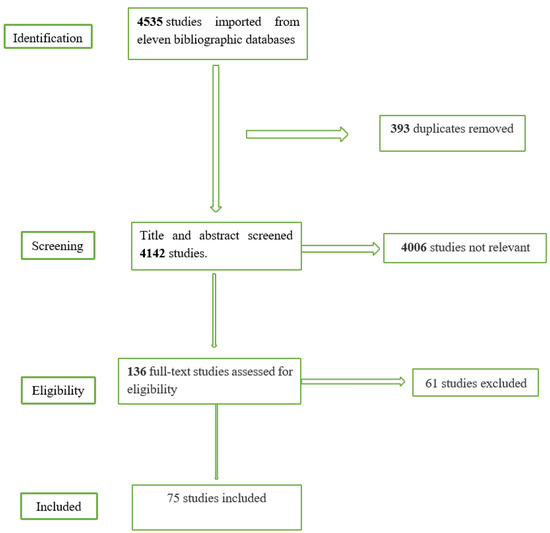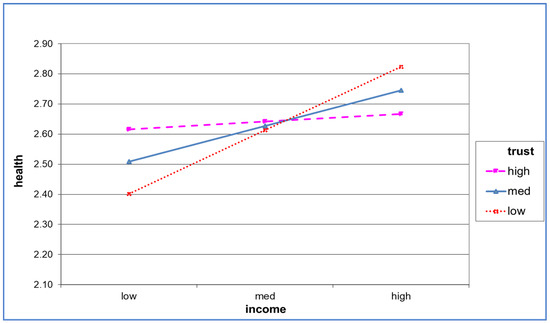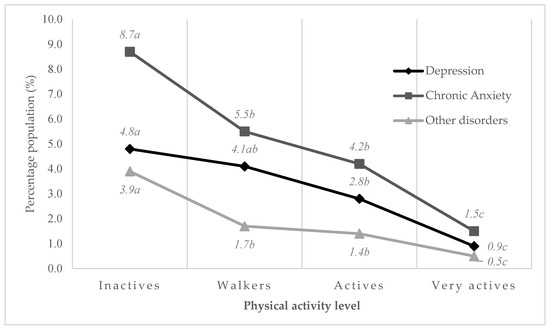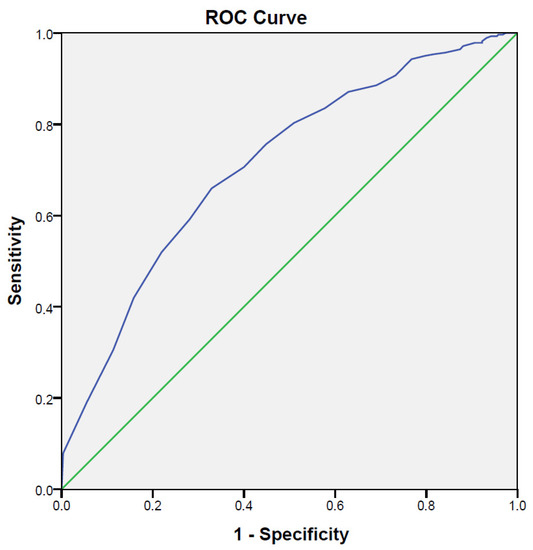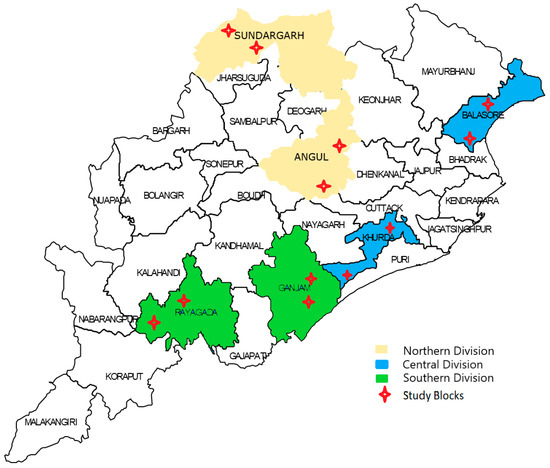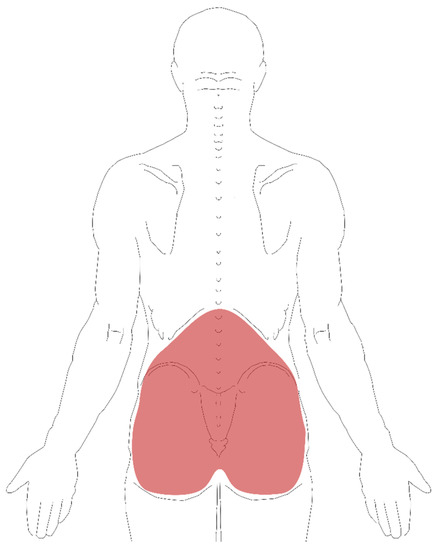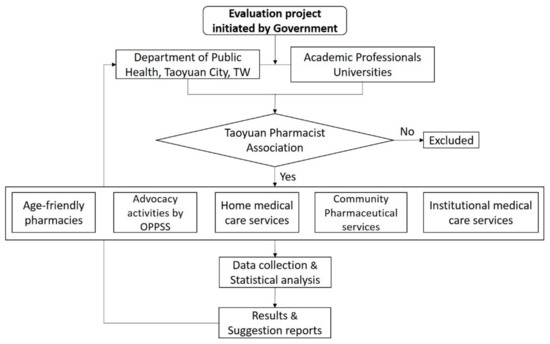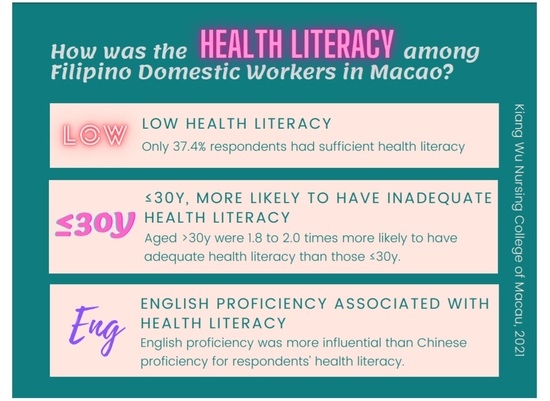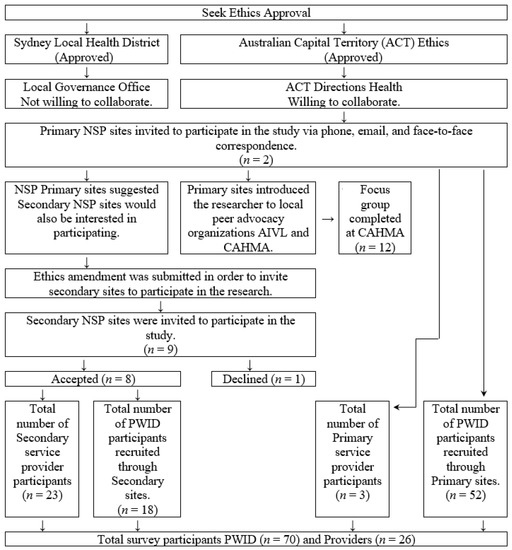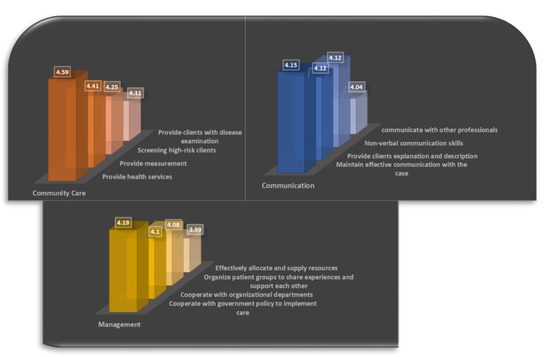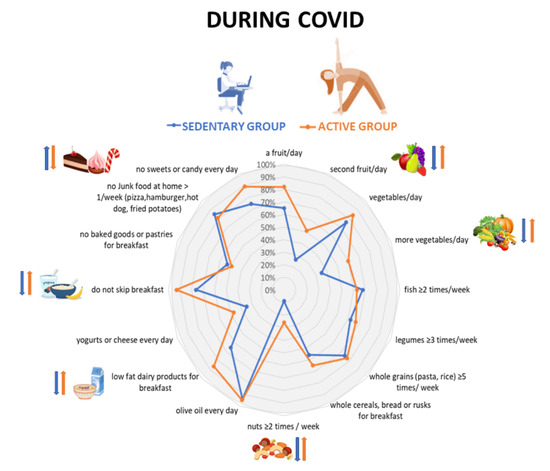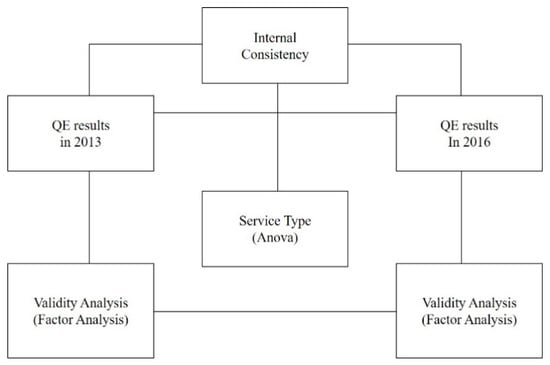Healthcare Strategy and Community Care
A topical collection in Healthcare (ISSN 2227-9032). This collection belongs to the section "Community Care".
Viewed by 73247
Share This Topical Collection
Editors
 Prof. Dr. Munjae Lee
Prof. Dr. Munjae Lee
 Prof. Dr. Munjae Lee
Prof. Dr. Munjae Lee
E-Mail
Website
Guest Editor
Department of Medical Humanities and Social Medicine, Ajou University School of Medicine, Suwon 16499, Republic of Korea
Interests: healthcare management; medical device industry; digital healthcare; technology commercialization; health policy
Special Issues, Collections and Topics in MDPI journals
 Dr. Kyu-sung Lee
Dr. Kyu-sung Lee
 Dr. Kyu-sung Lee
Dr. Kyu-sung Lee
E-Mail
Website
Assistant Guest Editor
Department of Medical Device Management and Research, SAIHST, Sungkyunkwan University, Seoul 06351, Republic of Korea
Interests: community care; health management; healthcare strategy; benign prostatic hyperplasia
Special Issues, Collections and Topics in MDPI journals
Topical Collection Information
Dear Colleagues,
Community care services are intended to help people who need care and support to live with dignity and independence in the community and to avoid social isolation. The services are aimed at the elderly and those who have mental illnesses, learning disabilities, and physical disabilities. The main aim in providing community care services is to enable people to remain living in their own homes and to retain as much independence as possible, avoiding social isolation. Local authority social services provide community care services or arrange for them to be provided.
The main objective of this Special Issue is to advance the fields of healthcare strategy and community care. Authors are encouraged to submit papers for consideration that examine government policies, health programs, and that assess these topics using health management methodologies. Thus, papers submitted for the Special Issue should empirically or quantitatively address the valuable implications of healthcare.
Dr. Munjae Lee
Dr. Kyu-sung Lee
Guest Editors
Manuscript Submission Information
Manuscripts should be submitted online at www.mdpi.com by registering and logging in to this website. Once you are registered, click here to go to the submission form. Manuscripts can be submitted until the deadline. All submissions that pass pre-check are peer-reviewed. Accepted papers will be published continuously in the journal (as soon as accepted) and will be listed together on the collection website. Research articles, review articles as well as short communications are invited. For planned papers, a title and short abstract (about 100 words) can be sent to the Editorial Office for announcement on this website.
Submitted manuscripts should not have been published previously, nor be under consideration for publication elsewhere (except conference proceedings papers). All manuscripts are thoroughly refereed through a single-blind peer-review process. A guide for authors and other relevant information for submission of manuscripts is available on the Instructions for Authors page. Healthcare is an international peer-reviewed open access semimonthly journal published by MDPI.
Please visit the Instructions for Authors page before submitting a manuscript.
The Article Processing Charge (APC) for publication in this open access journal is 2700 CHF (Swiss Francs).
Submitted papers should be well formatted and use good English. Authors may use MDPI's
English editing service prior to publication or during author revisions.
Keywords
- Community care
- Chronic disease
- Unmet needs
- Quality of life
- Health care and services
- Geographic information system (GIS) and policy
Published Papers (29 papers)
Open AccessArticle
Workforce Perspectives of Sustaining the Utilisation of a Harm Reduction Instrument in a Mental Health Residential Setting
by
Simon Kroes, Hannah McKim and Melissa Petrakis
Viewed by 995
Abstract
Purpose: This exploratory study investigated worker experiences of utilising the Before During After (BDA) harm reduction instrument to engage well with service users in a residential mental health service setting. Stakeholder interviews were conducted with a purposive sample of two senior nurses and
[...] Read more.
Purpose: This exploratory study investigated worker experiences of utilising the Before During After (BDA) harm reduction instrument to engage well with service users in a residential mental health service setting. Stakeholder interviews were conducted with a purposive sample of two senior nurses and one senior allied health staff at the study site to explore the impacts of BDA implementation on their work after 3 years of its use. A thematic analysis was conducted, including two-level coding. Five major themes were discussed. Of particular interest, and the focus of this paper, are the themes of effect on service users and effect on staff. The study found improved engagement between staff and service users, reduced stigma and more holistic care that was collaborative. In regard to staff, it was found that staff knowledge and confidence increased in addressing harm reduction issues with consumers and this was sustained over 3 years. Use of the BDA clinical instrument and package was reported to enhance worker engagement, knowledge and confidence in dual diagnosis work with service users.
Full article
Open AccessArticle
Indicators of Healthcare Services Utilization among the Syrian Refugee Population in Jordan: An Observational Study
by
Mahmoud Al-Qadi, Mahmoud Al-Hussami, Elena Riza, Esra’a Athamnah, Jumana Shehadeh, Christos Kleisiaris, Wafa Hamad Almegewly and Savvato Karavasileiadou
Cited by 1 | Viewed by 1510
Abstract
Background: Sufficient healthcare services utilization among the Syrian refugee population is one of the most important human rights. Vulnerable populations, such as refugees, are often deprived of sufficient access to healthcare services. Even when healthcare services are accessible, refugees vary in their level
[...] Read more.
Background: Sufficient healthcare services utilization among the Syrian refugee population is one of the most important human rights. Vulnerable populations, such as refugees, are often deprived of sufficient access to healthcare services. Even when healthcare services are accessible, refugees vary in their level of utilization of these services and their health-seeking behavior. Purpose: This study aims to examine the status and indicators of healthcare service access and utilization among adult Syrian refugees with non-communicable diseases residing in two refugee camps. Methods: The cross-sectional descriptive design was conducted by enrolling 455 adult Syrian refugees residing in the Al-Za’atari and Azraq camps in northern Jordan, using demographical data, perceived health, and the “Access to healthcare services” module, which is a part of the Canadian Community Health Survey (CCHS). A logistic regression model with binary outcomes was used to explore the accuracy of the variables influencing the utilization of healthcare services. The individual indicators were examined further out of 14 variables, according to the Anderson model. Specifically, the model consisted of healthcare indicators and demographic variables to find out if they have any effect on healthcare services utilization. Results: Descriptive data showed that the mean age of the study participants (n = 455) was 49.45 years (SD = 10.48), and 60.2% (n = 274) were females. In addition, 63.7% (n = 290), of them were married; 50.5% (n = 230) held elementary school-level degrees; and the majority 83.3% (n = 379) were unemployed. As expected, the vast majority have no health insurance. The mean overall food security score was 13 out of 24 (±3.5). Difficulty in accessing healthcare services among Syrian refugees in Jordan’s camps was significantly predicted by gender. “Transportation problems, other than fee problems” (mean 4.25, SD = 1.11) and “Unable to afford transportation fees” (mean 4.27, SD = 1.12) were identified as the most important barriers to accessing healthcare services. Conclusion: Healthcare services must imply all possible measures to make them more affordable to refugees, particularly older, unemployed refugees with large families. High-quality fresh food and clean drinking water are needed to improve health outcomes in camps.
Full article
Open AccessReview
Readmission of Patients to Acute Psychiatric Hospitals: Influential Factors and Interventions to Reduce Psychiatric Readmission Rates
by
Ernest Owusu, Folajinmi Oluwasina, Nnamdi Nkire, Mobolaji A. Lawal and Vincent I. O. Agyapong
Cited by 7 | Viewed by 5847
Abstract
Background: Appropriate and adequate treatment of psychiatric conditions in the community or at first presentation to the hospital may prevent rehospitalization. Information about hospital readmission factors may help to reduce readmission rates. This scoping review sought to examine the readmission of patients to
[...] Read more.
Background: Appropriate and adequate treatment of psychiatric conditions in the community or at first presentation to the hospital may prevent rehospitalization. Information about hospital readmission factors may help to reduce readmission rates. This scoping review sought to examine the readmission of patients to acute psychiatric hospitals to determine predictors and interventions to reduce psychiatric readmission rates.
Method: A scoping review was conducted in eleven bibliographic databases to identify the relevant peer-reviewed studies. Two reviewers independently assessed full-text articles, and a screening process was undertaken to identify studies for inclusion in the review. PRISMA checklist was adopted, and with the Covidence software, 75 articles were eligible for review. Data extraction was conducted, collated, summarized, and findings reported.
Result: 75 articles were analyzed. The review shows that learning disabilities, developmental delays, alcohol, drug, and substance abuse, were crucial factors that increased the risk of readmission. Greater access to mental health services in residential treatment and improved crisis intervention in congregate care settings were indicated as factors that reduce the risk of readmission.
Conclusion: High rates of readmission may adversely impact healthcare spending. This study suggests a need for focused health policies to address readmission factors and improve community-based care.
Full article
►▼
Show Figures
Open AccessArticle
The Impact of Income and Social Capital on the Health of People with Developmental Disabilities
by
Bogcheon Choi and Eunsil Yi
Viewed by 1330
Abstract
This study examines the impact of income and social capital on the health of people with developmental disabilities, focusing on the moderating effects of income and social capital on health. Hierarchical regression analysis was conducted using data from 235 people with developmental disabilities
[...] Read more.
This study examines the impact of income and social capital on the health of people with developmental disabilities, focusing on the moderating effects of income and social capital on health. Hierarchical regression analysis was conducted using data from 235 people with developmental disabilities who participated in the second wave of the Disability and Life Dynamics Panel. The findings show that people with developmental disabilities who were female, employed, and did not have multiple disabilities and chronic diseases were more likely to display higher levels of self-rated health. Furthermore, self-rated health was higher in those earning a higher income. The social network had a significantly positive effect on health, but its moderating effect on the impact of income did not carry statistical significance. Trust was found to have a moderating effect on the impact of income on health, where the group with greater trust and lower income was healthier than the group with lower trust. The findings suggest the need to provide income support and establish social capital for people with developmental disabilities to improve their health, and this study offers related policy implications.
Full article
►▼
Show Figures
Open AccessArticle
Measuring Nurses’ and Physicians’ Attitudes and Perceptions of the Appropriate Interventions towards Intimate Partner Violence in Saudi Arabia
by
Wafa Hamad Almegewly, Sanna Hawamdah, Fatchima Laouali Moussa, Wireen Leila Tanggawohn Dator, Anwar Alonezi and Majid Al-Eissa
Cited by 2 | Viewed by 2073
Abstract
Background: Intimate partner violence (IPV) is considered the most common form of violence against women worldwide, concerning public health, safety, and human rights. However, little to no studies in Saudi Arabia have explored the attitude and perception of health care providers working in
[...] Read more.
Background: Intimate partner violence (IPV) is considered the most common form of violence against women worldwide, concerning public health, safety, and human rights. However, little to no studies in Saudi Arabia have explored the attitude and perception of health care providers working in emergency departments toward IPV. This study aimed to measure the attitude and perception of Emergency Room (ER) health care providers towards the appropriate intervention for IPV. Methods: This is a cross-sectional quantitative study. Data was collected from a convenient sample of nurses (
n = 88) and physicians (
n = 18) working in ER, using Readiness to Manage Intimate Partner Violence Survey (PREMIS). Data was collected from two hospitals in Riyadh, Saudi Arabia, and descriptive analysis was used to analyze the data. Results: The majority of the respondents were aged 18–40 (
n = 106, 78%), while 22% were 41–60 years old, 69% were female, and 31% were male. Eighty-five percent were nurses and 15% were physicians. The majority of the respondents did not have any training on IPV and had gained knowledge or skills mostly during their medical/nursing classroom and clinical training. The analysis revealed that the participants had moderate levels of overall preparedness, knowledge about IPV, and perceived knowledge, with a mean score of 2.30, 18.62, and 2.18, respectively. The respondents had low scores in practice issues in new diagnosis (0.91), current screening (1.69), and actions when IPV is identified (0.91). The perceived preparedness and knowledge have a significant positive correlation, as shown by an r value of 0.8476 and a
p-value of <0.05. Conclusion: The study shows that participants stated minimal previous IPV knowledge and training. It is necessary to put in place adequate resources and specific training programs to overcome this issue for both ER nurses and physicians.
Full article
Open AccessReview
Clinical Management of Intraosseous Access in Adults in Critical Situations for Health Professionals
by
Álvaro Astasio-Picado, Paula Cobos-Moreno, Beatriz Gómez-Martín, María del Carmen Zabala-Baños and Claudia Aranda-Martín
Cited by 1 | Viewed by 4005
Abstract
There are health professionals who are unaware of the ideal management of the intraosseous route, despite the fact that it has been scientifically considered an alternative to the peripheral venous route when the patient is in critical condition. Thanks to continuous development, there
[...] Read more.
There are health professionals who are unaware of the ideal management of the intraosseous route, despite the fact that it has been scientifically considered an alternative to the peripheral venous route when the patient is in critical condition. Thanks to continuous development, there has been a need to provide emergency services with materials that manage to provide satisfactory care, despite the difficulties faced by health personnel. Objectives: The objective of this systematic bibliographic review is to update the theoretical and practical knowledge and strategies for the insertion and proper management of the intraosseous route as an emergency vascular access for nursing professionals. Data sources, study eligibility criteria: The search for the articles was carried out in various scientific databases with the help of a search string (January 2015 and May 2021), which combined the keywords and Boolean operators. Study appraisal and synthesis methods: Eighteen articles were chosen after a review of 1920 database articles, following the application of the inclusion and exclusion criteria. Results: Intraosseous infusion is an effective and safe technique, which increases patient survival. Therefore, it is of crucial importance that all nursing professionals know how to handle the different intraosseous devices in situations in which it is not possible to achieve immediate peripheral venous access. Conclusions and implications of key findings: It is of great need to have devices or fast and effective alternatives that allow us to develop safe interventions by health professionals.
Full article
►▼
Show Figures
Open AccessArticle
Increased Risks of Mental Disorders: Youth with Inactive Physical Activity
by
Ángel Denche-Zamorano, Juan Manuel Franco-García, Jorge Carlos-Vivas, María Mendoza-Muñoz, Damián Pereira-Payo, Raquel Pastor-Cisneros, Eugenio Merellano-Navarro and José Carmelo Adsuar
Cited by 22 | Viewed by 4682
Abstract
Before COVID-19, one of the most dangerous pandemics of the 21st century was physical inactivity (PI). Sedentary habits had increased in the last decades, reducing physical condition and increasing non-communicable diseases and mental disorders in the population. This study aimed to analyse the
[...] Read more.
Before COVID-19, one of the most dangerous pandemics of the 21st century was physical inactivity (PI). Sedentary habits had increased in the last decades, reducing physical condition and increasing non-communicable diseases and mental disorders in the population. This study aimed to analyse the relationships between physical activity level (PAL) and the prevalence of anxiety, depression, and other mental disorders in Spanish young aged 15–35 years and to calculate the odd ratio (OR) of developing from these mental disorders in inactive young people, based on PAL. Methods: A cross-sectional study based on data from the Spanish National Health Survey 2017 with 4195 participants was conducted. A descriptive analysis was performed. Possible differences between groups were analysed using the non-parametric statistical tests. OR and relative risks for mental disorders in inactive versus others PAL were calculated. Results: Dependence relationships were found between PAL and the prevalence of anxiety, depression, and other mental disorders (
p < 0.001). In addition, the risk of developing: anxiety (OR: 6.14. 95% CI: 3.28–11.50), depression (OR: 5.35. 95% CI: 2.40–11.96), and other mental disorders (OR: 8.52. 95% CI: 2.90–25.06) was higher in inactive young people. Conclusions: PI is associated to high risk of mental disorders in Spanish young people.
Full article
►▼
Show Figures
Open AccessArticle
An Innovative Approach for Improving Information Exchange between Palliative Care Providers in Slovenian Primary Health—A Qualitative Analysis of Testing a New Tool
by
Erika Zelko, Jozica Ramsak Pajk and Nevenka Krčevski Škvarč
Cited by 1 | Viewed by 2496
Abstract
Background: Interprofessional collaboration is an important part of palliative care. Effective communication and information exchange is essential for a high quality of care. The aim of this study was to test the effectiveness of a new tool for exchanging information between professionals in
[...] Read more.
Background: Interprofessional collaboration is an important part of palliative care. Effective communication and information exchange is essential for a high quality of care. The aim of this study was to test the effectiveness of a new tool for exchanging information between professionals in palliative care on primary healthcare level. Methods: With suggestions from the experts regarding palliative care needs in an interprofessional team from the Delphi study and community nurses from the field, we developed a paper version of the tool. The paper version was tested in a pilot phase, and subsequently, we conducted ten semi-structured interviews with the users of the new tool to test its feasibility and usability. The data were analyzed using qualitative content analysis, leading to improvement and development of the digital version of the new tool. Results: After completing the pilot phase of the research, we identified the following four categories: a systematic tool for more consistent treatment and better communication during the patient’s visit; training and empowerment; quality, safety and digitalization; these categories were later included in the final version of the digital communication tool. Conclusion: Effective palliative care requires a good exchange of information and communication between all care professionals who work with the patient. Effective communication contributes to making patients and their relatives feel safe in their home environment and allows patients to stay in their homes even as their disease progresses. The systematical new tool was assessed as useful to improve interdisciplinary cooperation and prepared in a digital version. Further research after the long-term use of the developed digital tool in everyday work might confirm its sustaining importance.
Full article
Open AccessArticle
Croatian Version of the Short Assessment of Health Literacy for Spanish Adults (SAHLSA-50): Cross-Cultural Adaptation and Psychometric Evaluation
by
Harolt Placento, Božica Lovrić, Zvjezdana Gvozdanović, Nikolina Farčić, Tihomir Jovanović, Jelena Tomac Jovanović, Lada Zibar, Nada Prlić, Štefica Mikšić, Nina Brkić Jovanović and Robert Lovrić
Cited by 5 | Viewed by 2343
Abstract
(1) Background: Short Assessment of Health Literacy for Spanish Adults (SAHLSA-50) was originally designed for Spanish-speaking regions, and translations validated for several languages. The aim of the study was to adapt and verify the psychometric characteristics of SAHLSA-50 in the Croatian context; (2)
[...] Read more.
(1) Background: Short Assessment of Health Literacy for Spanish Adults (SAHLSA-50) was originally designed for Spanish-speaking regions, and translations validated for several languages. The aim of the study was to adapt and verify the psychometric characteristics of SAHLSA-50 in the Croatian context; (2) Methods: The cross-sectional study included 590 respondents from the general population older than 18 years of age. Health literacy was measured by two scales: SAHLCA-50 and the Croatian version of the Newest Vital Sign screening test (NVS-HR), which was used as a measure of concurrent validity. Subjective Health Complaints (SHC) and Satisfaction with Life Scale (SWLS) questionnaires were also used to assess convergent validity; (3) Results: Internal consistency reliability of SAHLCA-50 was high and corresponds to the findings of the authors of the original research. The Cronbach alpha coefficient for SAHLCA-50 version was 0.91. The correlation of SAHLCA-50 with the NVS-HR test speaks in favor of concurrent validity. Correlation between health literacy and SHC speaks for convergent validity, just as was expected, while correlation with life satisfaction was not observed; (4) Conclusions: The SAHLCA-50 test can be a good and quick tool to assess health literacy of the adult population in the Croatian language. HL can affect the health and quality of life of the individual and the wider community.
Full article
►▼
Show Figures
Open AccessArticle
Association between Agility, Health-Related Quality of Life, Depression, and Anthropometric Variables in Physically Active Older Adult Women with Depression
by
Carmen Galán-Arroyo, Damián Pereira-Payo, Miguel A. Hernández-Mocholí, Eugenio Merellano-Navarro, Jorge Pérez-Gómez, Jorge Rojo-Ramos and José Carmelo Adsuar
Viewed by 1623
Abstract
Introduction. Depressive disorders are mental disorders that last over time, and seriously affect the lives of the people who suffer from them, diminishing their quality of life, reducing their motor capacity, and incapacitating them in their daily lives. It is a major problem
[...] Read more.
Introduction. Depressive disorders are mental disorders that last over time, and seriously affect the lives of the people who suffer from them, diminishing their quality of life, reducing their motor capacity, and incapacitating them in their daily lives. It is a major problem worldwide. Objective. To study the association between agility, health-related quality of life (hrqol), anthropometric status, and depression status in older adult women with depression. Design. Data collected from 685 physically active older women with depression were analyzed. Result. A moderate inverse correlation (r = −0.34) is shown between Time Up & Go (TUG) and EuroQol Five-Dimensional Three-Level Version (EQ-5D-3L). Between TUG and Geriatric Depression Scale (GDS), there is a small direct correlation (r = 0.14) between them. Between TUG and anthropometric data, all observed correlations are significant. Conclusions. There is a significant association between agility, health-related quality of life, depression, and anthropometric data in physically active older women with depression.
Full article
Open AccessArticle
Resolution of Resilience: Empirical Findings on the Challenges Faced and the Mitigation Strategies Adopted by Community Health Workers (CHWs) to Provide Maternal and Child Health (MCH) Services during the COVID-19 Pandemic in the Context of Odisha, India
by
Bijaya Kumar Mishra, Srikanta Kanungo, Kripalini Patel, Swagatika Swain, Subhralaxmi Dwivedy, Subhashree Panda, Sonam Karna, Dinesh Bhuyan, Meena Som, Brajesh Raj Merta, Debdutta Bhattacharya, Jaya Singh Kshatri, Subrata Kumar Palo and Sanghamitra Pati
Cited by 5 | Viewed by 2808
Abstract
Community health workers (CHW) faced increased challenges in delivering maternal and child health services during the current COVID-19 pandemic. In addition to routine services, they were also engaged in pandemic management. In view of a dearth of evidence, the current study explores the
[...] Read more.
Community health workers (CHW) faced increased challenges in delivering maternal and child health services during the current COVID-19 pandemic. In addition to routine services, they were also engaged in pandemic management. In view of a dearth of evidence, the current study explores the challenges faced by CHWs while rendering maternal and child health services. A qualitative study through in-depth interviews (IDI) and focus group discussions (FGD) in six districts of Odisha was conducted from February to April 2021. Data were analyzed using MAXQDA software. Personal-level challenges, like lack of family support, stress, and fear of contracting COVID-19; facility-level challenges, like transportation problems and inadequate personal protective measures; and community-level challenges, like stigma, resistance, and lack of community support were major hindrances in provisioning routine MCH services. Prevailing myths and misconceptions concerning COVID-19 were factors behind stigma and resistance. Sharing experiences with family, practicing yoga and pranayam, engaging ambulance bikes, financial assistance to mothers, counseling people, and involving community leaders were some effective strategies to address these challenges. Development and implementation of appropriate strategy guidelines for addressing the challenges of frontline warriors will improve their work performance and achieve uninterrupted MCH services during pandemics or similar health emergencies.
Full article
►▼
Show Figures
Open AccessArticle
Health Problems and the Use of Medications and Traditional Therapies among Chinese Immigrants Living in Spain
by
Bárbara Badanta, Aura Yolima Rodríguez-Burbano, Angeles C. López-Tarrida, Juan Vega-Escaño, Giancarlo Lucchetti, Sergio Barrientos-Trigo and Rocío de Diego-Cordero
Cited by 2 | Viewed by 2377
Abstract
In this study, we investigate the health problems and the use of medications and traditional therapies among Chinese immigrants in the Southern region of Spain. A qualitative study using semi-structured interviews and including 133 immigrants and 7 stakeholders was conducted in 2017. Transcription,
[...] Read more.
In this study, we investigate the health problems and the use of medications and traditional therapies among Chinese immigrants in the Southern region of Spain. A qualitative study using semi-structured interviews and including 133 immigrants and 7 stakeholders was conducted in 2017. Transcription, literal reading, and theoretical categorization were performed, and a narrative content analysis was carried out. The most common health problems were musculoskeletal (28.6%) and allergies (25.6%) related to work activity and unhealthy lifestyles. Key informants also reported gastric problems, stress, and changes in eating habits, mostly related to their work activity. For these problems, a large number of traditional remedies (herbs, diet therapy, acupuncture, vitamins, etc.) were used, usually combined with pharmaceutical drugs used for colds, flu, general malaise (29%), pain and fever (23%), and allergy drugs (9.2%). Chinese immigrants reported health conditions associated with their working conditions and life habits in Spain, using Traditional Chinese Medicine instead of pharmacological drugs. Understanding these health problems and promoting awareness towards traditional therapies in the healthcare system may help to design public policies and Health Promotion strategies targeting this group.
Full article
Open AccessEditor’s ChoiceArticle
Levels of Moral Distress among Health Care Professionals Working in Hospital and Community Settings: A Cross Sectional Study
by
Noemi Giannetta, Rebecca Sergi, Giulia Villa, Federico Pennestrì, Roberta Sala, Roberto Mordacci and Duilio Fiorenzo Manara
Cited by 11 | Viewed by 2100
Abstract
Moral distress is a concern for all healthcare professionals working in all care settings. Based on our knowledge, no studies explore the differences in levels of moral distress in hospital and community settings. This study aims to examine the level of moral distress
[...] Read more.
Moral distress is a concern for all healthcare professionals working in all care settings. Based on our knowledge, no studies explore the differences in levels of moral distress in hospital and community settings. This study aims to examine the level of moral distress among healthcare professional working in community or hospital settings and compare it by demographic and workplace characteristics. This is a cross-sectional study. All the professionals working in the hospitals or community settings involved received personal e-mail invitations to participate in the study. The Moral Distress Thermometer was used to measure moral distress among healthcare professionals. Before data collection, ethical approval was obtained from each setting where the participants were enrolled. The sample of this study is made up of 397 healthcare professionals: 53.65% of the sample works in hospital setting while 46.35% of the sample works in community setting. Moral distress was present in all professional groups. Findings have shown that nurses experienced level of moral distress higher than other healthcare professionals (mean: 4.91). There was a significant differences between moral distress among different professional categories (H(6) = 14.407;
p < 0.05). The ETA Coefficient test showed significant variation between healthcare professionals working in community and in hospital settings. Specifically, healthcare professionals who work in hospital experienced a higher level of moral distress than those who work in community settings (means 4.92 vs. means 3.80). The results of this study confirm that it is imperative to develop educational programs to reduce moral distress even in those settings where the level perceived is low, in order to mitigate the moral residue and the crescendo effect.
Full article
Open AccessArticle
Low Back Pain in Elderly from Belém-Pa, Brazil: Prevalence and Association with Functional Disability
by
Elaine Miyuka Sato, Mauricio Oliveira Magalhães, Beatriz Coelho Jenkins, Lays da Silva Ferreira, Hallyson Andrey Raposo da Silva, Paulo Renan Farias Furtado, Eder Gabriel Soares Ferreira, Emmanuele Celina Souza dos Santos, Bianca Callegari and Amélia Pasqual Marques
Cited by 2 | Viewed by 1750
Abstract
Background: This cross-sectional study aimed to determine the prevalence of low back pain (LBP) in the elderly population living in Belém-Pará and to assess the spectrum of problems related to these diseases including the demographic, socioeconomic, occupational characteristics and disability in this population.
[...] Read more.
Background: This cross-sectional study aimed to determine the prevalence of low back pain (LBP) in the elderly population living in Belém-Pará and to assess the spectrum of problems related to these diseases including the demographic, socioeconomic, occupational characteristics and disability in this population. Methods: Three structured questionnaires were applied in a randomly selected representative sample of 512 elderly people aged ≥60 years. Results: LBP prevalence in the elderly population was 55.7%. Among then, 56.1% had pain at the time of the interview (punctual prevalence), 91.7% had LBP in the last 365 days (prevalence in the last year), and 85.3% at some point in life (prevalence at some point in life). Overall, most studies are above average. LBP was positively associated with hypertension and the influence of the physical and mental health on their social activities ranged from slightly to extreme. LBP was negatively associated with characteristics, such as education (over 11 years), class A or B income, physical activity, high satisfaction with previous work, and excellent self-perceived health, corroborating to the literature. Conclusions: Greater intensity of pain and functional disability were associated with the presence of comorbidities, smoking habits, and low physical activity. LBP prevalence was high, above the national average, mainly affecting the underprivileged classes related to several modifiable factors, highlighting the importance of preventive and interventionist actions for healthy aging.
Full article
►▼
Show Figures
Open AccessArticle
Effect of Community Education Program on Stroke Symptoms and Treatment on School and College Students from South India: A Longitudinal Observational Study
by
Fayaz Khan, Riziq Allah Mustafa Gaowgzeh, Amer Al Saif, Mohamed Faisal Chevidikunnan, Ajith Soman, Aseel Mazi, Ejlal BinMulayh, Kirti Sundar Sahu and Haris Anjamparuthikal
Cited by 3 | Viewed by 2054
Abstract
Community awareness regarding stroke signs, risk factors, and actions that help reduce the risk and complications of stroke is poorly addressed, as it is thought to be the best approach to control and prevent stroke. Aim: To establish the awareness of stroke and
[...] Read more.
Community awareness regarding stroke signs, risk factors, and actions that help reduce the risk and complications of stroke is poorly addressed, as it is thought to be the best approach to control and prevent stroke. Aim: To establish the awareness of stroke and its management among high school and college students using an educational intervention. A questionnaire was administered to students from five high schools and four colleges with different areas of focus, (arts, science and commerce), types (public, semi-public and private), and economic locations before and after an educational lecture on stroke. The lecture covered the following elements: stroke definition, signs, risk factors, actions, time window for thrombolytic therapy, and types of rehabilitation interventions. This study included 1036 participants, of whom 36.3% were male and 56.4% were high school students, and the mean age was 17.15 ± 1.29 (15–22) years. Before the lecture, 147 participants were unaware of a single sign of stroke, and 124 did not know the risk factors. After the intervention, 439 participants knew four signs of stroke, and 196 knew 12 risk factors. Female students had better knowledge about stroke signs (odds ratio (OR), 3.08; 95% confidence interval (95% CI), 2.15–4.43). Hypertension (52.7%) and weakness (59.85%) were the most known signs and risk factors. The proportion of students who selected traditional medicine as the mode of treatment decreased from 34.75% to 8.59% after the lecture. Other rehabilitation methods (e.g., physical therapy, occupational therapy, speech therapy and counseling) were chosen by more than 80% of the students. The results of the current study showed that the awareness on stroke risk factors and management among the school and college students can be significantly improved with regular educational interventions, and therefore stroke can be prevented to some extent.
Full article
Open AccessArticle
Integrating the Public Health Services Model into Age-Friendly Pharmacies: A Case Study on the Pharmacies in Taiwan
by
Shih-Chang Chen, Kuan-Han Lee, Der-Juinn Horng and Po-Jui Huang
Cited by 2 | Viewed by 1918
Abstract
Taiwan is expected to become a superaged society by 2026. Community pharmacies have recently joined Taiwan’s primary care system; they have great potential to provide professional healthcare services. This study examined whether the services provided by community pharmacists enhance medication adherence, enable the
[...] Read more.
Taiwan is expected to become a superaged society by 2026. Community pharmacies have recently joined Taiwan’s primary care system; they have great potential to provide professional healthcare services. This study examined whether the services provided by community pharmacists enhance medication adherence, enable the identification and solution of drug therapy problems, and are accepted by community residents. The Department of Public Health, Taoyuan City, collaborated with the Taoyuan Pharmacist Association over 11 months in 2018 in enabling pharmacists to dispense prescriptions and provide medication adherence consultations, cognitive services, and home and institutional medical care services. This study designed four satisfaction questionnaires to assess the feasibility and performance of these services. Regarding the services related to medication knowledge and adherence, 92.10% of the patients reported overall satisfaction, and all understanding and ability scores were improved in more than 95% of patients. The number of patients highly cooperative regarding their medication had risen from 14 to 234 after the intervention, and the number with low medication adherence had dropped from 533 to 33. More than 90% of respondents indicated that the institutional medical care services had significantly improved their medication knowledge and behaviors. The feasibility of the incorporation of integrated the public health services model into age-friendly pharmacies was confirmed by this study.
Full article
►▼
Show Figures
Open AccessArticle
Easy to Read Health Education Material Improves Oral Health Literacy of Older Adults in Rural Community-Based Care Centers: A Quasi-Experimental Study
by
Kuo-Ting Sun, Tzong-Ming Shieh, Shih-Min Hsia, Valendriyani Ningrum, Xin-Yi Lin and Yin-Hwa Shih
Cited by 4 | Viewed by 2092
Abstract
Health education increases older adults’ health knowledge and affects their health outcomes. Older adults have physical changes with aging, such as blurred vision and cognitive decline. Therefore, health education materials must be legible in their case. This study, following the “easy (EZ) to
[...] Read more.
Health education increases older adults’ health knowledge and affects their health outcomes. Older adults have physical changes with aging, such as blurred vision and cognitive decline. Therefore, health education materials must be legible in their case. This study, following the “easy (EZ) to read” concept, designed oral health education material and tested the learning effectiveness of older adults in rural community-based care centers in central Taiwan. Three of the communities were provided EZ to read health education material (
n = 72), while three were given general text material (
n = 57) as the control group. We collected pre-test and post-test scores using the Mandarin version of the oral health literacy adult questionnaire (MOHL-AQ). The demographic background of the EZ to read and general text groups showed no significant difference (
p > 0.05). Analysis of covariance (ANCOVA) showed that the EZ to read material significantly improved total scores of oral health literacy (
p < 0.001). The chi-square test showed a significant improvement in oral health literacy levels (
p < 0.001). We suggest applying EZ to read concepts to widen the field of older adult education and to reduce illegibility-induced health knowledge disparities.
Full article
Open AccessArticle
Health Literacy among Filipino Domestic Workers in Macao
by
Pak-Leng Cheong, Hui Wang, Wan Cheong and Mei Ieng Lam
Cited by 7 | Viewed by 2286
Abstract
Migrant worker is a global phenomenon that is associated with the health of individuals and populations. Filipino workers constitute the largest group of non-Chinese migrant workers in Macao, they are mainly employed as domestic workers. The purpose of this study is to investigate
[...] Read more.
Migrant worker is a global phenomenon that is associated with the health of individuals and populations. Filipino workers constitute the largest group of non-Chinese migrant workers in Macao, they are mainly employed as domestic workers. The purpose of this study is to investigate the status of health literacy (HL) and associated factors among Filipino domestic workers in Macao. The study is a cross-sectional study. Chi square’s test and binary logistic regression models were used for data analyzing. Filipino who was employed by a family in Macao as a domestic worker within the valid contract period was eligible in the study. A total of 379 valid questionnaires were collected during December 2020 and March 2021. Health literacy was measured using the short-form Health Literacy Instrument (HLS-SF12). The results showed that only 37.4% of the respondents have sufficient health literacy. Age was an important factor that was associated with health literacy, with Filipino domestic workers younger than and equal to 30 years of age more likely to have inadequate health literacy. The results will help to make recommendations for further research and public health policy.
Full article
►▼
Show Figures
Open AccessArticle
Organic Collaborative Research Partnership Building: Researchers, Needle and Syringe Program Providers, and People Who Inject Drugs
by
Danielle Resiak, Elias Mpofu and Roderick Rothwell
Cited by 2 | Viewed by 1705
Abstract
(1) Background: People who inject drugs (PWID) and needle and syringe program (NSP) providers increasingly partner with researchers to explore harm reduction best practice. However, a paucity of research exists regarding how best to engage PWID and community NSP providers to generate the
[...] Read more.
(1) Background: People who inject drugs (PWID) and needle and syringe program (NSP) providers increasingly partner with researchers to explore harm reduction best practice. However, a paucity of research exists regarding how best to engage PWID and community NSP providers to generate the evidence for sustainable harm reduction services. (2) Aim: This study reports on our use of an organic community research partnership-building approach between researchers, NSP providers, and PWID in Canberra ACT, Australia. (3) Method: Survey participants included both PWID (n = 70) and NSP providers (n = 26) across primary (n = 2), secondary (n = 7), and outreach (n = 1) services in Canberra ACT. Applying an organic partnership-building strategy, we engaged with partners and adapted approaches according to information gained in the process of implementation. (4) Results: We found engaging in relationship building around partner priority activities created mutual understanding and trust premised in authenticity of the evolving partnership. Our organic approach, which included a partner audit of the research tools for relevance, resulted in high acceptance and enrolment into the research by NSP providers and PWID. Finally, we observed strong social capital building utilizing an organic approach for the sustainability of the partnership. (5) Conclusions: The results of this study provide evidence for the benefits of organic collaborative research partnership building with NSP providers and PWID for authentic service program implementation. Our approach to research partnership building resulted in strong relationships built on shared goals and objectives, mutual gains, and complementary expertise. We propose the wider use of organic approaches to developing collaborative research partnerships with NSP providers and PWID to enhance consumer responsiveness towards service provision.
Full article
►▼
Show Figures
Open AccessArticle
Community Health Nursing Competency and Psychological and Organizational Empowerment of Public Health Nurses: A Cross-Sectional Survey
by
Ching-Pyng Kuo, Pei-Lun Hsieh, Hsiao-Mei Chen, Shang-Yu Yang, Yu-Ling Hsiao and Shu-Liang Wang
Cited by 6 | Viewed by 3929
Abstract
Aim: This study explored the effect of public health nurses’ current community care nursing competency on the psychological and organizational empowerment of public health services in Taiwan. Design: A cross-sectional nationwide survey design was used. Methods: A self-developed structured questionnaire was administered to
[...] Read more.
Aim: This study explored the effect of public health nurses’ current community care nursing competency on the psychological and organizational empowerment of public health services in Taiwan. Design: A cross-sectional nationwide survey design was used. Methods: A self-developed structured questionnaire was administered to public health nurses. They were recruited using a purposive sampling technique, and they participated in community healthcare workshops. Results: The mean score of Community Care Nursing Competence (CCNC) was 3.92 ± 0.83. The mean score in Community Empowerment (CE) was 3.66 ± 0.90. The study revealed that age and communication competence were crucial factors in public health nurses working in the community. With age and through the accumulation of practical experience, public health nurses’ communication competence may also improve, which can further enhance their psychological and organizational empowerment in the nursing workplace.
Full article
►▼
Show Figures
Open AccessArticle
Self-Perceived Physical Activity and Adherence to the Mediterranean Diet in Healthy Adolescents during COVID-19: Findings from the DIMENU Pilot Study
by
Angelo Galluccio, Giovanna Caparello, Ennio Avolio, Emanuele Manes, Simona Ferraro, Cinzia Giordano, Diego Sisci and Daniela Bonofiglio
Cited by 12 | Viewed by 2756
Abstract
The global pandemic coronavirus disease (COVID-19) resulted in restrictions which forced adolescents to stay at home and influenced their food habits and lifestyles with potential negative health impact. This study aims to investigate the self-reported physical activity (PA) and eating habits related to
[...] Read more.
The global pandemic coronavirus disease (COVID-19) resulted in restrictions which forced adolescents to stay at home and influenced their food habits and lifestyles with potential negative health impact. This study aims to investigate the self-reported physical activity (PA) and eating habits related to the consumption of Mediterranean foods in a sample of adolescents during the COVID-19 lockdown enrolled into the DIMENU study. A web survey was launched for 91 adolescents (aged 15–17 years) to assess their adherence to the Mediterranean Diet using the KIDMED test and lifestyle habits using a questionnaire designed following recommendations by Italian National Institute of Health (ISS score). Our results indicate that most of the sample declared no changes in eating habits and PA without sex differences. After dividing the sample into active and sedentary groups based on the self-perceived PA, we found that KIDMED and ISS scores were significantly higher (
p = 0.0028 and
p = 0.0001, respectively) in active adolescents. Moreover, KIDMED was positively correlated with ISS only in active adolescents (r = 0.311,
p = 0.0185). In conclusion, our data underline the impact of the PA on the Mediterranean diet adherence in adolescents during the lockdown, suggesting the usefulness of promoting wellness programs directed towards inactive individuals to increase their awareness on the importance of healthy lifestyles.
Full article
►▼
Show Figures
Open AccessArticle
Relationship between Emotional Intelligence, Sleep Quality and Body Mass Index in Emergency Nurses
by
Noelia Miguez-Torres, Alejandro Martínez-Rodríguez, María Martínez-Olcina, Laura Miralles-Amorós and Cristina Reche-García
Cited by 5 | Viewed by 2996
Abstract
Nurses have long working hours with high psychological burdens. In addition, in the emergency department, nurses are required to quickly adapt emotionally. The aim of this study was to describe and relate emotional intelligence (EI) skills of emergency nurses, their body mass index
[...] Read more.
Nurses have long working hours with high psychological burdens. In addition, in the emergency department, nurses are required to quickly adapt emotionally. The aim of this study was to describe and relate emotional intelligence (EI) skills of emergency nurses, their body mass index (BMI) and sleep quality. For this purpose, a cross-sectional was carried out in which the perceived emotional intelligence test and the Pittsburgh sleep quality index were applied. Sixty-two emergency nurses (48 women and 14 men) participated. The results indicated that the majority of them present adequate levels of EI, with no differences by gender. Younger nurses showed a better ability to feel, express and understand emotional states than the older ones, while the ability to regulate emotional states occurred in the opposite way. Nurses who have been working for several years showed a better ability to regulate emotions than those with less experience. Those who were overweight grade II and obese type I expressed their feelings better, also the regulation of emotional states decreased as weight increased. Finally, it has been observed that the quality of sleep of emergency nurses is significantly altered, and that this lack of sleep may affect their ability to process emotions.
Full article
Open AccessArticle
Feasibility of Upper Gastrointestinal Examination in Home Care Setting with a Magnetically Assisted Capsule Endoscopy System: A Retrospective Study
by
Yang-Chao Lin, Ching-Lin Chen, Yi-Wei Kao, Chi-Yang Chang, Ming-Chih Chen and Chih-Kuang Liu
Cited by 3 | Viewed by 2098
Abstract
The magnetic assisted capsule endoscope (MACE) with a hand-held magnetic field navigator (MFN) for upper gastrointestinal examination achieved satisfactory results in a healthy volunteer study. We evaluated the feasibility of upper gastrointestinal examination in the home care setting with the MACE system. Home
[...] Read more.
The magnetic assisted capsule endoscope (MACE) with a hand-held magnetic field navigator (MFN) for upper gastrointestinal examination achieved satisfactory results in a healthy volunteer study. We evaluated the feasibility of upper gastrointestinal examination in the home care setting with the MACE system. Home care patients with upper gastrointestinal symptoms that received an MACE exam were enrolled in the study. MACE procedure time; completeness of observation of important anatomical landmarks; endoscopic diagnosis; patient tolerance during the procedure; and patient data, including age, sex, comorbidities, symptoms, body weight, and height, were retrieved from hospital information system for data analysis. A total of 16 participants were enrolled with a mean age 74.3 ± 15.4 years (47 to 99 years). One patient failed to swallow the capsule and was excluded. The average procedure time was 23.7 ± 10.0 min (14.1 to 42.5 min) to complete each endoscopic exam for the remaining 15 patients. The overall maneuverability in the esophagus, stomach, and duodenum was 93.75%, 87.5%, and 75%, respectively. Overall completeness in the aforementioned regions was 93.75%, 81.25%, and 75%, respectively. No severe adverse events were noted. The results clearly demonstrate the promise of using this MACE system to perform endoscopic examination outside the hospital for patients confined to the community and home.
Full article
►▼
Show Figures
Open AccessArticle
Current Status of Traditional Korean Medicine Services in Public Sector: A Study for Integrating Traditional Korean Medicine into Community Care System
by
Soo-Hyun Sung, Minjung Park, Jihye Kim, Sun-Woo Jeon, Angela Dong-Min Sung, Eun-Jin Lee, Danny Oh, Jung-Youn Park, Jang-Kyung Park and Kyeong Han Kim
Cited by 4 | Viewed by 2336
Abstract
Korea is currently executing a pilot program for community care of its aging population and aims to implement community care systems on a national scale by 2025. This study examines the traditional Korean medicine (TKM) service to be provided within community care by
[...] Read more.
Korea is currently executing a pilot program for community care of its aging population and aims to implement community care systems on a national scale by 2025. This study examines the traditional Korean medicine (TKM) service to be provided within community care by understanding the current status of TKM services. The Ministry of Health and Welfare (MoHW) sent official letters to 242 local governments (cities, districts, and counties) from October to November 2019 to survey the status of the public TKM services provided in 2018. The items of the survey included basic demographic information as well as information that could reveal how the program was implemented. In 112 local government jurisdictions (response rate 46.3%), a total of 867 TKM service programs were in place. As a result of the survey, it was revealed that they did not have any service manuals or evaluation results. To provide home-care-based TKM service for the elderly as an integrated part of a community care system, it is necessary to develop, distribute, and evaluate a standard service manual including an evaluation index by the central government.
Full article
Open AccessArticle
Psychometric Properties of the Self-Healing Assessment Scale for Community-Dwelling Older Adults
by
Yi-Chen Wu, Hua-I Hsu, Heng-Hsin Tung, Shi-Jun Pan and Shu-Wei Lin
Cited by 3 | Viewed by 2267
Abstract
Self-healing, an intrinsic healing capacity, helps individuals’ bodies and minds to regain wholeness and is significant in the pursuit of one’s own healthy ageing and independence. This study was intended to develop and preliminarily test the reliability and validity of the self-healing assessment
[...] Read more.
Self-healing, an intrinsic healing capacity, helps individuals’ bodies and minds to regain wholeness and is significant in the pursuit of one’s own healthy ageing and independence. This study was intended to develop and preliminarily test the reliability and validity of the self-healing assessment scale (SHAS) for community-dwelling older adults, and was conducted in three phases. Phase 1: The definitions of self-healing were synthesized from our knowledge of the literature regarding the ontology of self-healing and panels of 25 experts. The initial version of the 12-item questionnaire was developed by the in-depth interviews of focus groups and panels, and the content was validated by six experts. Phase 2: A cross-sectional survey, including a total of 500 community-dwelling older adults with a mean age of 71.76, was then conducted for the preliminary reliability and validity test. The content validity indices were satisfied. Twelve items were retained, and three factors were identified, namely, physical and mental state, socioeconomic and environmental status, and independent lifestyle, which explained 65.8% of the variance under explorative approval. Phase 3: the standardized factor above 60 obtained by confirmatory factorial analysis indicated good convergent validity. The relationship between self-healing and health-related quality of life was confirmed via concurrent validity testing. The SHAS can facilitate the evaluation of factors associated with community-dwelling older adults’ self-healing capacity. Programs tailored to enhance self-healing capacity should be designed, implemented, and inspected regarding their effectiveness in older adults.
Full article
►▼
Show Figures
Open AccessArticle
Performance of (Instrumental) Activities of Daily Living and Physical Capacity in Spanish Adults with Intellectual Disabilities: A Cross-Sectional Pilot Study
by
Laura Delgado-Lobete, Rebeca Montes-Montes, Carlos Freire and María del Mar Ferradás
Cited by 6 | Viewed by 2618
Abstract
Performance in basic and instrumental activities of daily living (ADL; IADL) is an essential indicator of daily functioning and health of people with intellectual disabilities (ID). The aims of this pilot study were to describe the profile of ADL and IADL performance in
[...] Read more.
Performance in basic and instrumental activities of daily living (ADL; IADL) is an essential indicator of daily functioning and health of people with intellectual disabilities (ID). The aims of this pilot study were to describe the profile of ADL and IADL performance in Spanish adults with ID, and to examine its association with functional physical skills. The Waisman Activities of Daily Living Scale for adolescents and adults with developmental disabilities (W-ADL) scale was administered to the caregivers of twenty adults with ID (mean age = 41.0, SD = 10.1; women = 75.0%). In addition, dynamic balance and maximum walking speed (MWS), lower-body strength, aerobic capacity and manual dexterity of participants were individualized assessed. The results showed that 40% of adults with ID were completely independent in ADL, but all participants reported activity limitations in at least one IADL. Dynamic balance and MWS, lower-body strength and manual dexterity showed significant and moderate-to-strong correlations with daily functioning (
r = 0.495–0.814;
p < 0.05). Linear regression analysis indicated that lower-body strength and manual dexterity significantly predicted activity performance in adults with ID (adjusted R
2 = 0.816,
p = 0.004–0.016). This study highlights the need to support the performance of both ADL and IADL and to promote physical fitness in Spanish community-based care centers for adults with ID.
Full article
Open AccessArticle
Effects of Living Conditions, Subjective Integration, and Social Networks on Health-Related Quality of Life among the Migrant Elderly Following Children in Jinan, China
by
Tingting Tian, Fanlei Kong and Shixue Li
Cited by 10 | Viewed by 1868
Abstract
With accelerated urbanization in China, an increasing number of the migrant elderly following children (MEFC) have appeared. This study aims to explore the effects of living conditions, subjective integration, and social networks on the health-related quality of life (HRQOL) of MEFC in Jinan,
[...] Read more.
With accelerated urbanization in China, an increasing number of the migrant elderly following children (MEFC) have appeared. This study aims to explore the effects of living conditions, subjective integration, and social networks on the health-related quality of life (HRQOL) of MEFC in Jinan, China. HRQOL was assessed by the 12-item Short-Form Health Survey, which included the mental component summary (MCS) and the physical component summary (PCS). Univariate analyses and binary logistic regression were used to investigate the association between the above indicators and HRQOL. A total of 656 MEFC were selected by multi-stage cluster random sampling, 25.2% and 25.0% of whom were defined as poor MCS and poor PCS, respectively. Those who understood the local dialect, could trust others, and connected with friends were more likely to have good MCS; those with a nanny, faulty elevator, and no support from their spouse were the reverse. MEFC who were trans-city, had no elevator or a faulty elevator, and went to the hospital alone were more likely to have poor PCS; those who approved of living conditions in their hometowns were the reverse. Results indicated that better living conditions, stronger subjective integration, and wider social networks led to higher HRQOL of MEFC. Implications of the government, communities, and families of MEFC were given to improve their HRQOL.
Full article
Open AccessArticle
Characteristics of Departments That Provided Primary Support for Households with Complex Care Needs in the Community: A Preliminary Cross-Sectional Study
by
Kyoko Yoshioka-Maeda and Hitoshi Fujii
Viewed by 1375
Abstract
To prevent emergency admissions and save medical costs, support should be provided to households that include people with complex care needs to allow them to continue living in their own homes. This community-based, cross-sectional study was conducted to (1) identify which departments that
[...] Read more.
To prevent emergency admissions and save medical costs, support should be provided to households that include people with complex care needs to allow them to continue living in their own homes. This community-based, cross-sectional study was conducted to (1) identify which departments that public health nurses (PHNs) worked have been the primary providers of support for households with complex care needs and (2) clarify the length of time required by each department to resolve primary health problems. We analyzed 148 households with complex care needs that were registered in City A from April 2018 to July 2019. Four types of departments were the primary support providers for complex care households: the department supporting persons with disabilities (
n = 54, 36.5%), public/community health centers (
n = 47, 31.8%), department of older adults (
n = 29, 19.6%), and welfare offices (
n = 18, 12.2%). The Mantel–Cox test showed that welfare offices mainly supported households in economic distress and needed significantly less time to resolve their primary health issues than other departments. For early detection and resolution of primary health problems for households with complex care needs, PHNs and healthcare professionals should focus on their economic distress and enhanced multidisciplinary approaches.
Full article
Open AccessArticle
How Should the Social Service Quality Evaluation in South Korea Be Verified? Focusing on Community Care Services
by
Kichan Yoon, Gyubeom Park and Munjae Lee
Cited by 1 | Viewed by 2433
Abstract
The quality evaluation (QE) of social services tends to have a large variation in results depending on the object and method of service measurement. To overcome these limitations, an analysis of the internal consistency or validity of the social service QE index is
[...] Read more.
The quality evaluation (QE) of social services tends to have a large variation in results depending on the object and method of service measurement. To overcome these limitations, an analysis of the internal consistency or validity of the social service QE index is necessary, but meta-research on this is insufficient. This study analyzes the internal consistency and validity of evaluation indexes based on the results of social service QE. We utilized the social services QE manual of the Social Security Information Service’s Facility Evaluation Department. The social service QE indexes implemented in 2013 and 2016 were coded and analyzed. We found that there was internal consistency between the results of the care services evaluation in 2013 and 2016. In addition, there were differences between the care services QE indexes by service type in 2013 and 2016. It is necessary to construct effective indexes by simplifying, diversifying, and differentiating social service QE indexes. In addition, control devices for external factors (region, composition of the evaluation team, etc.) must be prepared to maintain the consistency of evaluation scores, and in the long term, standardization of social service QE indexes is necessary.
Full article
►▼
Show Figures







